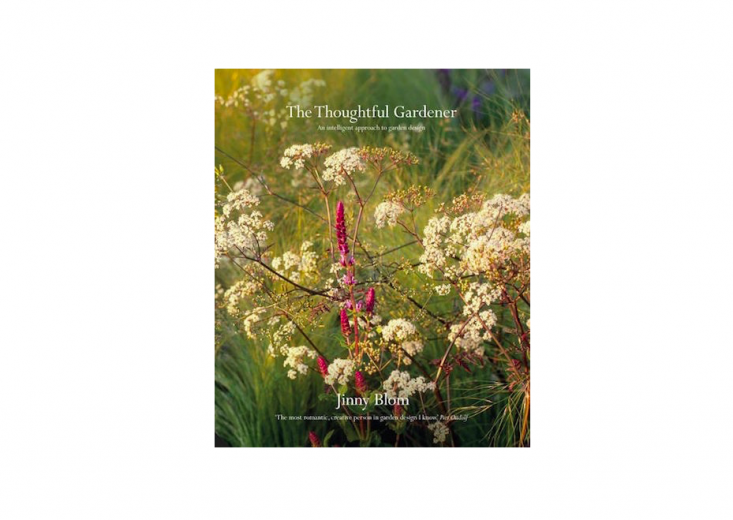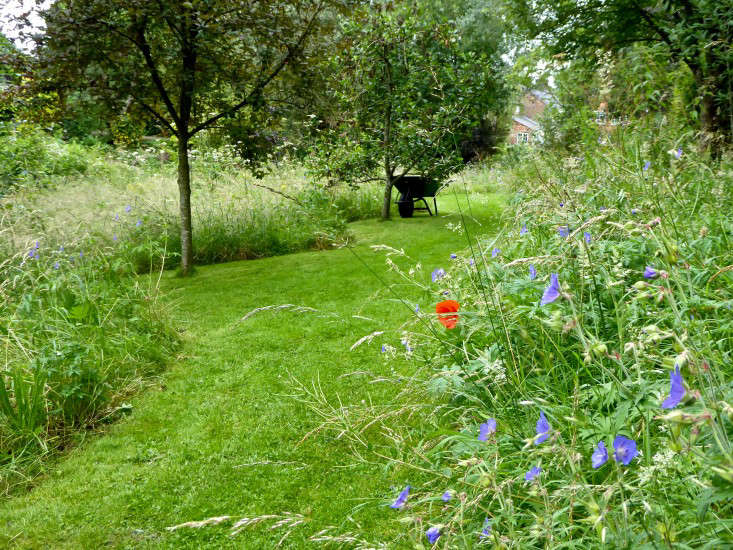Landscaper Jinny Blom’s long-awaited book is so beautiful that you will not want to rush it. As the title suggests, there is more to this than lovely photography: the pages of The Thoughtful Gardener will stop you in your tracks and make you think about the potential of gardens, in a way that has never struck you before.
Photographs by Andrew Montgomery, unless otherwise noted.

From the quotes and captions alone, this book could make you a better gardener. But the whole package is so persuasively put together, that the skim-reading approach is impossible. Jinny’s world is complex and multi-disciplinary but she has a light touch. The Thoughtful Gardener is proof of her philosophy: “Things that work together in natural harmony are beautiful.”
Jinny’s language is always evocative, whether she is communicating with a pencil, paint brush, or words. “There is a wonderful moment in designing when the muddy waters swirling around in my mind go clear and I can see what I’m doing,” she writes. The driving impulse in transforming a dysfunctional piece of land into something logical and luxuriantly alive is distilled perfectly in this book.

Green structures and water are key elements of the Blom batterie. Pools are part of the natural flow of a garden, edged with sympathetic (and relevant) stone. They are not an afterthought, hitched on to the side. One pool in an informal garden is fringed by a lawn allowed to grow long, with an elysian hedge of raspberries—for eating, as opposed to harvesting.

Strong color is steadied by plenty of green, including cubes of topiary, in the planting shown here. The pool was placed in the most ornamental part of the garden, near the house. Since the back of this manor with its Georgian conservatory is such a vision, it made sense to build a pool house facing it.

Because Jinny is a “cultural geographer” in the words of Paula Deitz in the Foreword (also worth reading!), she doesn’t feel the need to impose a design vision on the natural world; instead she amplifies what is already there, while removing distractions or “dross.”

Jinny has described herself as being “unmoved by fashion” but could also take credit for being “unmoved by taste.” The planting of red roses, in this age of polite pink, is an indication of the trusting relationship developed between landscape designer and landscape owner.

Fortunately for her patrons, Jinny Blom has a great interest in, and huge knowledge of, making things, including buildings. Here, new buildings emphasize the character of the main house, while screening the outer estate boundary from the garden’s inner sanctum.

“When it is all over, it can begin.” Read this book in bed but keep it close at hand.
N.B.: For more of Jinny Blom’s work, see Garden Designer Visit: Jinny Blom in Primrose Hill.













Have a Question or Comment About This Post?
Join the conversation (0)